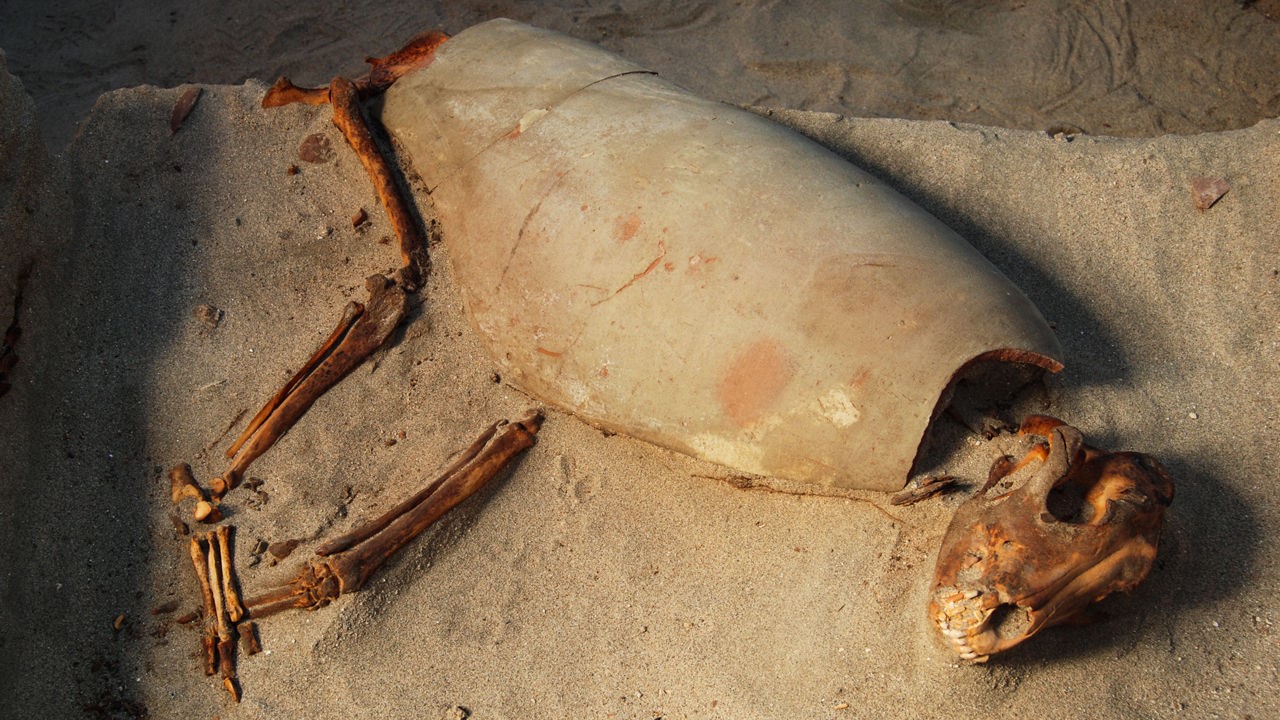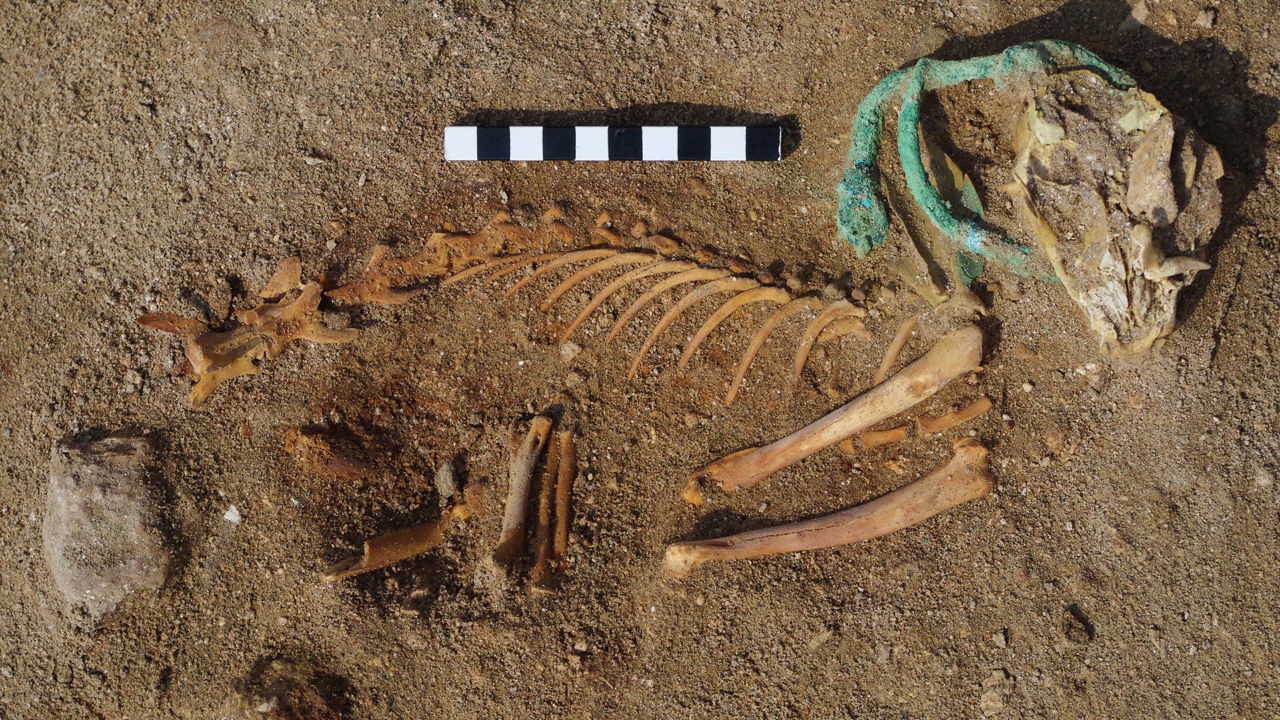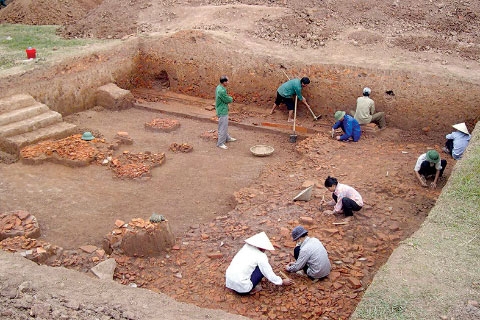Cats and dogs lie as if sleeping, in separate graves. Many wore collars or jewelry, and had been cared for through injury and old age, much like today’s pets. It has probably been 2,000 years since someone last buried a beloved animal friend here in Egypt on the shores of the Red Sea.
This excavation site, which used to be the early Roman port of Berenice, was found 10 years ago, but since then no one knows its purpose in the past. Now, a detailed excavation has unearthed the graves of nearly 600 cats and dogs, along with compelling evidence that these animals were close pets to humans. The new discovery means the site is the oldest known pet cemetery, showing that the concept of pets as they are known today was not unfamiliar to the ancient world.

Michael MacKinnon, an archaeologist at the University of Winnipeg who has studied the role of animals across the Mediterranean but was not involved in the new excavation study, said: “I have never encountered a meaning page like this. The idea of pets as part of the family was difficult to come by in ancient times, but I think it was a reality.”
Archaeologist Marta Osypinska and her colleagues at the Polish Academy of Sciences discovered this livestock cemetery just outside the city walls, beneath a Roman dump, in 2011. appears to have been in use from the 1st to 2nd centuries, when Berenice was a bustling area where ivory, fabrics, and other luxury goods were traded from India, Arabia, and Europe.
In 2017, Osypinska’s team reported unearthing the remains of about 100 animals – mostly cats – with tracks and evidence suggesting they appeared to have been cared for as pets. But the exact nature of the site remains unclear. Salima Ikram, an expert on ancient Egyptian fauna at the American University in Cairo, said at the time that the skeletons could have simply been discarded and buried here.
But now, Osypinska and her colleagues have exhumed the remains of 585 animals from the site and analyzed the bones in detail. A veterinarian helped the team determine health, diet and cause of death.
The animals appear to have been gently placed in carefully prepared burial holes. Many were also covered with textiles or pottery shards, “forming a kind of coffin,” Osypinska said. More than 90% are cats, many wearing iron collars or collars strung with glass and shells. A cat is also placed on the wing of a large bird.

The team found no evidence of mummification, sacrifice or other rituals, as has been found in ancient animal burials such as the Ashkelon site in Israel. At Berenice, most animals appear to have died from injury or disease.
Some cats have broken legs or other fractures that may have resulted from falling or being kicked by a horse. Other cats died young, possibly from infectious diseases spread in the cramped city. Dogs, which make up only about 5% of buried animals (aside from cats and dogs, the rest are monkeys), tend to die of old age. Many have lost most of their teeth or suffer from periodontal disease and osteoarthritis.
Many of these animals live a long time and have had their wounds healed, Osypinska said. “Such injured animals have to be fed to survive,” she said, “sometimes even special food, in the case of animals with almost no teeth left.”
Evidence shows that humans took great care of these animals, especially in a difficult region where almost all resources had to be imported – and they were also very careful about burial, like many modern-day pet owners.
“They don’t do it for godhood or for any utilitarian benefit,” Osypinska said. Instead, she argues that the relationship between humans and their pets is “remarkably close.” surprised”, much like the relationship we see today.
Ikram is convinced by this research. “This is a cemetery,” she said. “And it sheds many interesting light on the inhabitants of Berenice and their relationship with animals.”

Archaeologist Wim Van Neer of the Royal Belgian Institute of Natural Sciences, who has studied the relationship between humans and animals in the ancient world, also agreed with the study. However, Van Neer thinks it’s possible that the people of Berenice value their cats and dogs for reasons that aren’t purely sentimental. For example, a seaport would be infested with rats, making cats a prized working animal.
Osypinska hopes the new work will convince archaeologists that human companion animals are worth studying. She said that at first, some experienced archaeologists discouraged her from participating in this research, arguing that pets were not suitable subjects to learn about the lives of ancient peoples.

:





